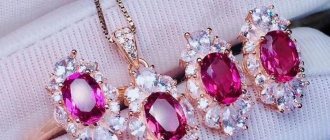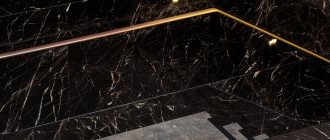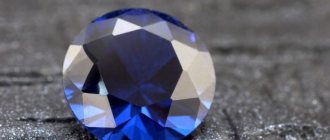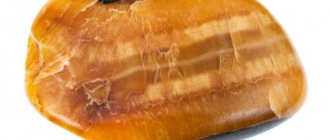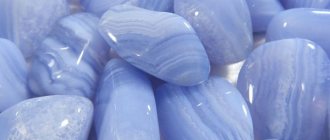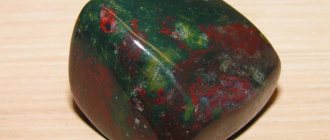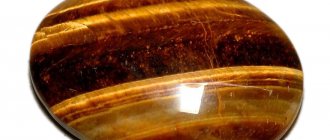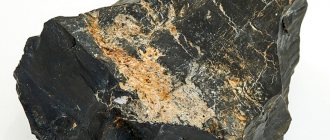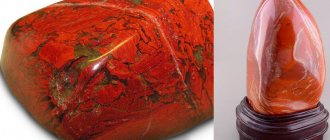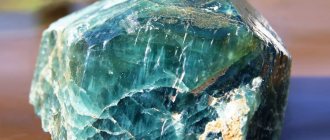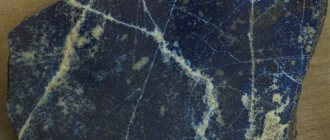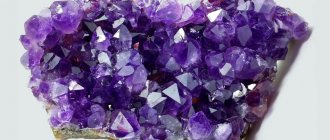Morganite stands out among other stones not only for its beauty, but also for its magical properties. It is also used in the treatment of various diseases. In order for the mineral to truly be a strong amulet for you, it is advisable to be among those to whom it matches the zodiac sign. However, even if astrologers do not recommend such a talisman to you personally, this is not a reason to refuse it. Let's find out more about this wonderful stone.
History of the name
The mineral is named after the American banker and industrialist John Morgan, who was interested in gemology. He collected an extensive collection of minerals and donated it to the Museum of Natural History (New York). In 1911, a stone found in California was given the name “morganite.”
In Russia, such a mineral was discovered earlier and was named in 1908 in honor of the mineralogist Viktor Ivanovich Vorobyov, who tragically died on an expedition.
At the end of the 20th century, mineralogists decided to replace these names with the term “pink emerald.” But this name did not catch on.
Currently, the international English name for the mineral is “morganite”. In Russia it is used along with “vorobievite”, as well as the colloquial name “amethyst-balsatin”.
Record sparrow
Amazing specimens of Vorobievite are kept in various museums around the world. For example, the largest faceted sparrowstone with a weight of 1625 carats is stored in Toronto, Canada. A beautiful specimen, which weighs approximately 600 carats, is located in the Hermitage (Russia). And a carved female figurine (6x11 cm) from a single crystal “lives” in New York.
Physicochemical characteristics
Morganite stone is pink beryl.
- The chemical formula is Be3Al2(Si6O18) .
- Impurities - Mn3+, Cs, Li, Rb, K.
- Color - pink, sometimes with shades: purple, orange, reddish, amber.
- Transparency - transparent, translucent, opaque.
- Hardness - 7–8.
- Density - 2.6–2.9 g /m3 .
In nature, this rare variety of beryl is found in the form of prism crystals.
When exposed to direct sunlight for a long time, the morganite stone fades (and it will not be possible to return the color using x-rays).
When heated, it can turn into goshenite (colorless beryl).
A mineral with an intense pink color may be radioactive. Specimens of small size and light color have much less radioactivity.
Varieties of Morganite
The color range of minerals is quite extensive. It can vary from pale pink to light purple. The most popular is pink morganite. This is due to the predominance of manganese in its structure.
In addition, there are lilac and pale purple stones.
The most expensive and rare variety of the mineral is considered to be peach stone. It is even more expensive than a diamond.
The color range of the stone is considered natural. The crystals are not processed in any way to change the pigments. Therefore, any jewelry retains its original appearance. An interesting feature of the crystals is their pronounced dichroism. At the same time, the stone appears transparent or pink - it all depends on the angle of view.
Many people are interested in: imitation morganite - what is it? You can find glass ceramic morganite on sale. This is a completely synthetic stone, which is a nanocrystal.
To distinguish a natural mineral from an imitation, you should pay attention to the following signs:
- When the crystal is heated to 400 degrees, the natural stone loses its color and becomes transparent.
- Under the influence of X-rays, the natural crystal acquires a rich red tint.
- When immersed in a special chemical reagent, bromoform, the crystal remains on the surface. This is due to its lower density.
It is important to understand that only natural pebbles have magical and healing properties.
The mineral may have a delicate light purple color.
Place of Birth
Morganite is mined not only in Russia and the USA, but also in other countries:
- Brazil;
- China;
- Afghanistan;
- Tajikistan;
- Madagascar.
Pink beryl of jewelry grade is supplied to the world market in Africa and Brazil.
In 1989, 23 kg was discovered in Maine (USA) . It was given the name "Rose of Maine".
In Russia, sparrowite is found in Transbaikalia and the Urals, but not much. It is often found as a by-product during the extraction of other minerals.
The Museum of the Mining Institute (St. Petersburg) houses 5-kilogram agglomerate of this precious stone.
Decorations
Like aquamarine, another subtype of beryl, faceted morganite usually does not have inclusions visible to the naked eye. Less transparent areas are cut out or cut into cabochons.
Because one of the key characteristics of morganite is pleochroism—pale pink to deep reddish pink—the stone must be carefully inspected before cutting. Saturated hues are quite rare in minerals, so a large nugget is needed to obtain an attractive stone for later use in jewelry.
Morganite is given all known standard shapes and sizes, and is also subjected to unique designer cuts. Crystals of the mineral are found in large sizes, so large-cut stones are more common (even specimens weighing more than 100 carats are found). The larger the size of the finished product, the greater the likelihood that it will have a rich color.
Medicinal properties
Morganite, according to lithotherapists, has the following effects on the human body:
- Helps reduce pain due to radiculitis.
- Brain function, memory, and reactions in emergency situations improve.
- Chronic heart diseases are treated more effectively.
- Women's diseases go away faster (if you wear a gold ring with this gemstone).
- Nerves calm down. It is useful to wear a ring or pendant with pink beryl to an exam, interview, casting.
- Digestion and metabolism in the body improves.
When using this stone for medicinal purposes, you should not refuse treatment prescribed by your doctor.
For healing from diseases, it is not recommended to use large specimens of morganite, especially bright pink ones, since there is a high probability that they emit a lot of radiation.
It is better to use small light-colored stones. But they also do not need to be kept near lymph nodes, the thyroid gland and large moles.
Magic properties
The blinking gemstone is revered by adherents of Eastern spiritual teachings and practices as a gift from a Higher Power.
Help with daily life
The magical properties of morganite are used for self-improvement, building relationships, etc.
Morganite is of particular importance for people with increased anxiety. The pebble helps him to be calmer about troubles, to trust himself and loved ones more, to be more active and decisive.
The owner of this gem will have increased intuition, he will begin to understand others more, and will establish relationships with colleagues and managers.
The mineral will help you find love. For couples who decide to separate, it will help restore tender feelings for each other.
Morganite, which is a family amulet, is recommended to be kept away from other stones and prying eyes.
Talismans
If you use a gem in this capacity, then the type of decoration and setting matter:
- Morganite inserts in earrings, rings, and brooches protect a person from negative energy directed at him.
- Peach-colored morganite is considered a stone of happiness and good luck.
- For business men, a bracelet with an orange stone is suitable as a talisman.
- A pendant with a pink stone can become a love talisman for a woman.
- Morganite rings have become popular as engagement rings.
- Morganites in a silver frame (especially a ring) are talismans for creative people.
Who is suitable according to their zodiac sign?
Morganite, from an astrological point of view, is ideal for Cancer, Scorpio, Pisces . However, some astrologers do not advise Scorpio to wear this gem.
This mineral has good compatibility with Libra . With such a talisman, they will reach new heights in self-development, creativity, and business.
According to the horoscope, the energy of the gem is perfectly combined with the energy of Gemini .
It is suitable for the rest of the zodiac signs only as a decoration.
How to wear and care
Radioactively hazardous morganite samples are characterized by a very bright color (pink or reddish) and large size. But such stones are not legally sold; they are stored in special premises.
Considering the possibility of radioactivity, miniature beads and inserts in a soft pink color are more preferable.
The mineral must be handled with care:
- Clean with a soft damp sponge and baby soap. Then you need to rinse with water at room temperature.
- For storage, it is better to select a separate box. The only neighbor of this mineral can be rock crystal, which purifies its energy.
- The box should not be placed near heat sources or in direct sunlight.
SEMI PRECIOUS PINK STONES
Semi-precious pink stones are more common, have a lower price, but are not inferior to precious stones in beauty.
Agate
Agate is a variety of quartz or chalcedony, the pink color of which is given by iron hydroxide. We recommend: Green gems: TOP-18
Agate
The mineral is famous for its characteristic texture:
- layered - the texture of the mineral is determined by layers of different thicknesses. Layers can be multi-colored or monochrome, differing only in shade;
- with a specific pattern (moss, star agate, etc.) - the texture is determined by foreign inclusions.
Characteristics:
| Hardness | 6,5—7 |
| Shine | bold or matte |
| Refractive index | 1,57-1,58 |
| Transparency | translucent or opaque |
Peculiarities:
- in striped stones, agate layers often alternate with the mineral quartzin, which is distinguished by its milky whiteness.
- The natural color of agates is not bright, so the stone is often painted. The products found on the shelves are of a flashy palette, which have clearly undergone additional processing.
Pomegranate
In rare cases, varieties of garnet - almandine and pyrope - form pink crystals with a crimson, red or purple tint.
Pomegranate
Pink colors are obtained if chromium impurities are contained in small quantities during the formation of the stone.
Characteristics:
| Hardness | 6,5—7,6 |
| Shine | glassy, greasy, sometimes diamond |
| Refractive index | 1,70— 2,01 |
| Transparency | transparent to opaque |
Peculiarities:
- garnet has high strength, can be processed well and can be cut in any type;
- crystals are rarely homogeneous; upon magnification, inclusions and cavities are noticeable in them;
- garnets are often counterfeited, passing off colored glass as a mineral;
How to distinguish from a fake
Under the guise of natural morganites, they sometimes offer to buy:
- cheaper minerals (they can only be distinguished using special equipment);
- plastic or glass imitations (plastic is lighter than stone, and glass heats up quickly in your hands);
- synthetic material.
Artificial morganite is nanoalloy, it is as beautiful as natural, and is radiation safe. It can be worn constantly, but it has no healing or magical properties.
Sellers who value their reputation indicate the origin of the stone in the product description with the following notes:
- "natural";
- “HT” (i.e. hydrothermal);
- "Sitall".
Price
The cost on the world market of morganite processed to look like a diamond is $55–250 per 1 carat .
Particularly prized are specimens with cool shades and silky tints created by microscopic inclusions.
The Russian jewelry market mainly presents glass-ceramite morganites accompanied by cubic zirconia.
Examples of prices in Russian online stores:
- ring (925 sterling silver, with nanocrystals) — RUB 1,990. ;
- earrings (14k gold) — RUB 18,990.
Areas of application
Only jewelry. Expensive, shiny jewelry. Mainly for us women
